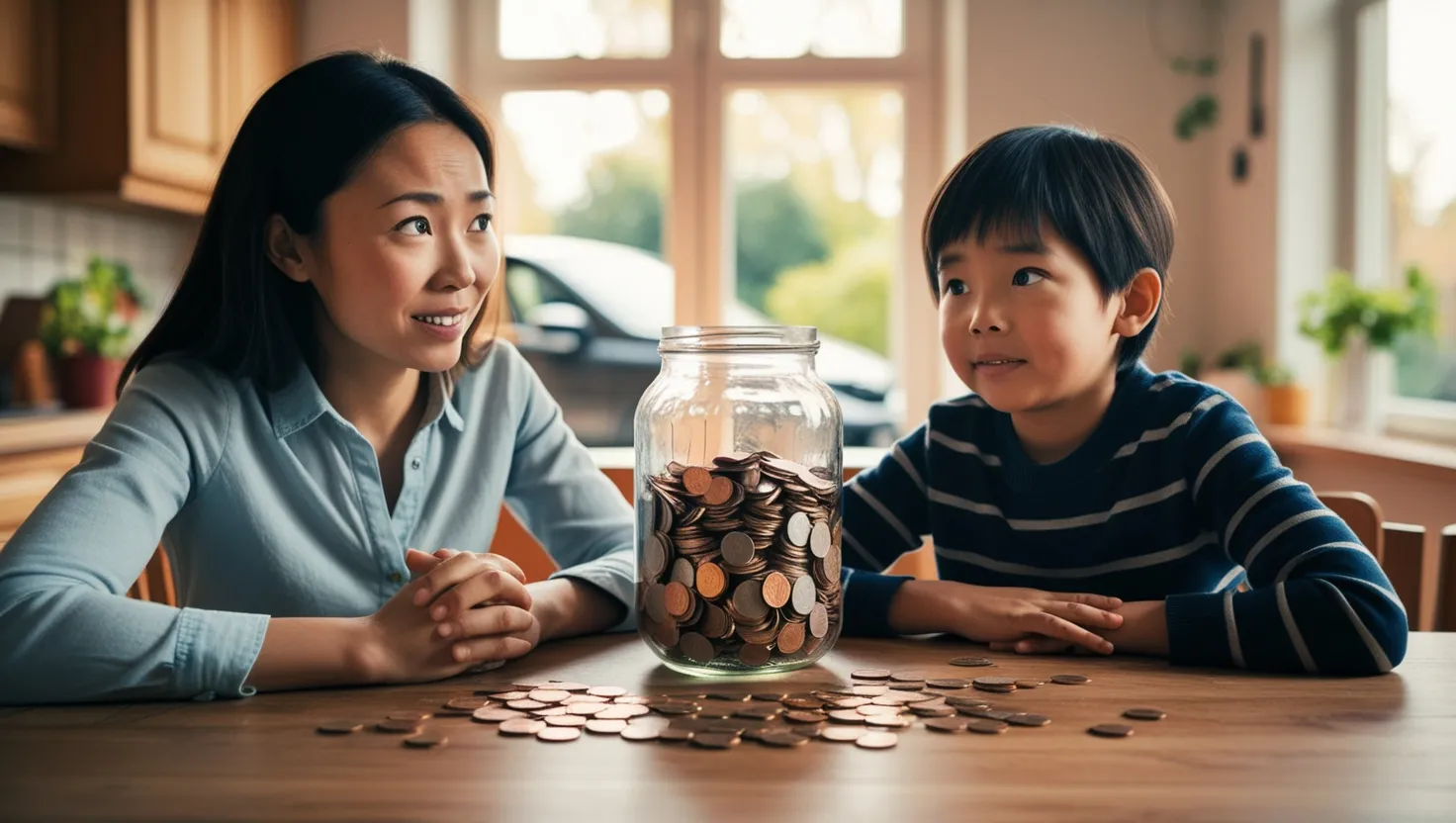Imagine you’re driving home with your child, sharing laughs and planning dinner, when suddenly the car sputters, then stops. There’s a quiet tension as you both sit in the stillness, instincts searching for a solution. No rescue from a magic app, no savings tucked away. Instead, what unfolds is not only a lesson in money but in strong family bonds—and isn’t that what counts most in life?
Isn’t it amazing how a handful of coins can become the source of calm? If you’ve ever felt a sinking feeling when faced with the cost of car repairs, you’re not alone. Across neighborhoods and cities, the bill for fixing even something minor can drain a family’s monthly budget, leaving folks scrambling for quick fixes. Some will borrow, others will panic. But in this story, it’s all about choosing a slower, steadier way out: saving together, one coin at a time. It’s a tangible, honest approach rather than chasing after credit or short-term loans.
Years ago, I heard Benjamin Franklin’s famous line:
“Beware of little expenses. A small leak will sink a great ship.”
This mother and her son took those words to heart. After their car broke down, they started a new ritual. Each day, they’d drop coins into a jar, taking turns and tracking the growing stash together. With every clink, their anxiety eased just a little. Instead of seeing the problem as daunting, it became manageable. Does that sort of shift surprise you?
What struck me is how saving becomes more than just about the money—it’s an invitation for honest conversations. The mother used their situation to talk about needs versus wants, explaining why they wouldn’t buy treats for a while, and how every coin now had a purpose. Her son, once grumpy about skipping pizza night, started looking for coins under couch cushions, suddenly invested in their shared goal. Isn’t it funny how quickly we adapt when the stakes are clear?
There’s a lesson here I rarely see mentioned: when faced with a setback, turning it into a shared challenge, not a solo burden, builds trust. You learn about each other’s strengths. The mother taught her son patience (“We haven’t saved enough yet, but we will”), and he taught her resourcefulness (“Let’s see if recycling bottles gets us more coins!”). These soft skills matter as much as hard cash.
Let’s be honest—most advice on emergency funds starts with numbers: save three months’ income, keep it in a separate account, automate transfers. What’s missing is the real hurdle for many families—getting started. This story does away with big bank talk. It begins with the coins you can find, the ones that seem too insignificant to matter. Yet, over weeks, their pile grows, serving as a visual cue that progress is happening. It’s not abstract. It’s there, in the kitchen, next to the coffee mugs.
Think about your first emergency fund. Did it feel impossible to build at first? When all you can manage is a handful of change, doubt creeps in. But what this family discovers is that saving regularly—even in tiny increments—strengthens your commitment. Small wins add up and start to feel like real achievements. That’s why the emotional shift happens: fear quiets down, replaced by a sense of control.
Dale Carnegie once reminded us:
“Inaction breeds doubt and fear. Action breeds confidence and courage.”
As the jar fills, dinner chats change. No longer about the broken car, but about what’s next—how much they’ve saved, ways to increase it, prospects for repair. The son asks questions: “What happens if the bill is higher? Should we keep saving after we fix the car?” Suddenly, the lesson is bigger than just readiness. It’s about building good habits for any emergency.
Isn’t it easy to underestimate the effect little acts have on security and relationships? As their jar grew, so did their connection. Mornings became coin hunts, weekends were for budgeting—together. It’s so different from the isolation many feel when money problems hit. How often do we invite children into these planning moments? Even adults often avoid speaking about financial stress, treating it as shameful rather than something to tackle as a team.
Some might think: why not just ask for help or take a loan? The answer is simple. By relying on each other, making sacrifices, and building their own solution slowly, the mother and son gained more than just their repaired car. They developed trust, resilience, and confidence. This isn’t merely about solving a problem—it’s about growth.
There’s something powerful about seeing your child beam with pride over a full coin jar. By the time they’d saved enough, the car repair wasn’t just a fixed problem. It was a celebration. Both had contributed. They could look back and say: “We did this together.” That sort of experience leaves a mark, teaching lessons about preparedness that last a lifetime.
Warren Buffett once said:
“Do not save what is left after spending, but spend what is left after saving.”
Beyond the financial facts, there’s a quieter message here: when you turn a crisis into a collaborative action, you replace dread with hope. The next time a surprise bill emerges, there’s less panic, because you know you can handle it—step by step, coin by coin. The emergency fund isn’t just financial insulation; it’s emotional security.
I like to ask myself: If I lost my job tomorrow, or my washing machine broke down, would I feel powerless—or prepared? The answer depends on the habits I’ve built, and whether I’ve let fear paralyze me, or let action move me forward. If you grew up seeing your parents stash coins for “rainy day” moments, you probably understand how comforting that can be. It’s a tradition worth passing on.
Some experts argue for more complex saving strategies, advocating apps, automatic deductions, or investment accounts. While those can be useful, it’s the simple routine—the daily decision to save something, no matter how small—that builds real financial muscle. When the mother and son chose this path, they taught each other—and anyone watching—that strength isn’t always in numbers. Sometimes it’s in persistence.
Would you rather save alone, or make it a family project? When saving becomes a ritual, it turns into a source of communication. It redefines how we think about “shared responsibility.” For this family, the jar was more than glass and metal—it was a symbol that problems can be solved without panic or secrecy. Kids grow up remembering those moments far more than spreadsheets or bank balances.
The story doesn’t end when the car is fixed. Their emergency fund keeps growing, but now the purpose is broader: it’s not just for the car, but for life’s surprises. The mother finds herself more relaxed about money, and her son approaches spending decisions with curiosity and caution. Isn’t that the sort of lifelong insight we all want for the next generation?
So next time you’re faced with an unexpected expense, consider starting with the basics: grab a jar, gather your loose change, and invite someone you trust to join you. Together, turn worry into action, action into resilience, and resilience into a lifelong habit.
“A penny saved is a penny earned.”
—Benjamin Franklin
What small step will you take today, and who will you invite to join you?






